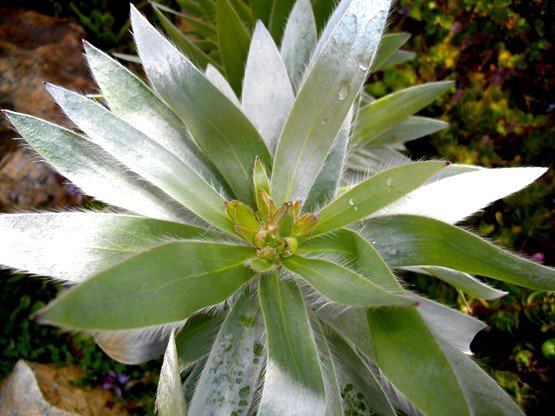Leucadendron argenteum summer leaf shine

Author: Ivan Lätti
Photographer: Ivan Lätti
In botanical technical parlance, the leaves of Leucadendron argenteum are described as simple, while in appearance they are everything but! Special in the dry season, the vivid silver leaf glitter on a bright sunny day, helped by summer wind, is a hallmark of Cape outdoor living.
The leaves are spirally arranged on the stems, usually clustered at branch tips. There is no leaf petiole or stalk to speak of; petioles are usually absent from Leucadendron species.
The leaf shape is narrowly obovate to elliptic, tapering at the base and narrowly tapering to the acutely pointed tip. Leaf margins are entire, appearing bearded from the long hairs present. The whitish leaf midrib is for the most part visible, the spaced and ascending lateral veins tending to be obscured by the lustrous hair.
The covering of long silky, silvery hairs on both surfaces makes the leaves shine, the feature that brought about the common name of silver tree. Hairy leaf coverings limit transpiration during the dry Cape summers, the hairs lying flat upon the leaf blades. In winter, when the Cape (usually) gets rain, the leaves appear dull. The hairs are then raised upon the blades, losing their conspicuous sheen. Ample transpiration is allowed at this time as moisture retention is not at a premium.
The leaves of male Leucadendron plants are usually smaller than those of the female ones. It is not known whether this is the case for the silver tree (Coates Palgrave, 2002; Esterhuyse, et al, 2001).

